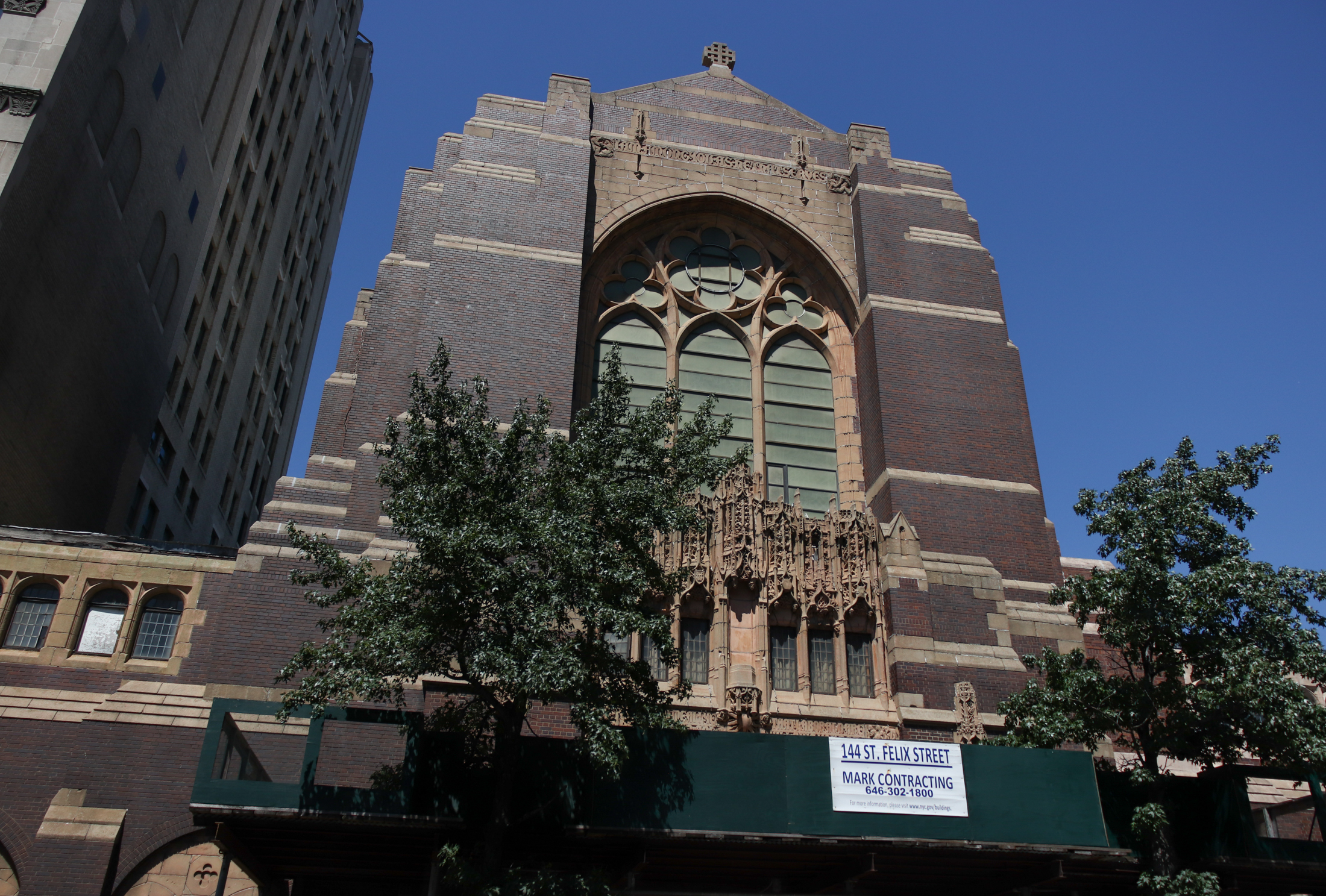Building of the Day: 647 Fulton Street
(Photo: William Gabel, on Flickr, thru cinematreasures.com) Brooklyn, one building at a time. Name: Strand Theater Address: 647 Fulton Street Cross Streets: Corner Rockland Place Neighborhood: Fort Greene Year Built: 1918-19 Architectural Style: Neo-Classical Architect: Thomas W. Lamb Other buildings by architect: Mark Strand Theater, Loew’s 175th St. Theater, Manhatttan. In Brooklyn: Loew’s Bedford, Loew’s…

(Photo: William Gabel, on Flickr, thru cinematreasures.com)
Brooklyn, one building at a time.
Name: Strand Theater
Address: 647 Fulton Street
Cross Streets: Corner Rockland Place
Neighborhood: Fort Greene
Year Built: 1918-19
Architectural Style: Neo-Classical
Architect: Thomas W. Lamb
Other buildings by architect: Mark Strand Theater, Loew’s 175th St. Theater, Manhatttan. In Brooklyn: Loew’s Bedford, Loew’s Gates, Loew’s Metropolitan, Loew’s Pitkin Theaters, 179 theaters in total, across the US.
Landmarked: No
The story: Brooklyn was once home to a very large and thriving Theater District. It was a large, spread out area, with theaters on Fulton Street, near the old courthouse, scattered down to the present site of the Brooklyn Academy of Music, and all along the Flatbush corridor. All things considered, we have a remarkable number of these buildings still present, but back in the first decades of the 20th century, they were everywhere, and we’ve lost so many, gone without a trace. One of the survivors is the Strand Theater.
The Mark Strand Theater opened on August 13, 1919. It shared architects, ownership and management with the Mark Strand Theater in Manhattan. The first show at the theater was an extravaganza called “The World and Its Women”, a film starring opera singer Geraldine Farrar, with a featured live stage show with other singers and the house organist and orchestra performing excerpts from Aida and La Boheme.
This classy, and classically styled venue was designed by famed theater designer Thomas W. Lamb, and had 2,940 seats. The lobby was said to have been spectacular, with marble staircases, and black and gold marble columns, marble furniture, a marble fountain, and red and yellow mottled marble walls with bas reliefs. There were elaborate glass and bronze screens separating parts of the lobby, and the whole thing was lit by huge bronze chandeliers hanging from the ceiling. It was intended to look like an old Roman palazzo on steroids. The building also had large dressing rooms for the artists, in a Georgian style, and there was also a large lounge, a smoking room for male patrons, and rest rooms on each floor.
The sight lines in the theater itself were said to be excellent, with a state of the art lighting system that allowed the shows to be lit with colored gels and spotlights for fancy visual effects. They also had the latest in film projectors, and were among the first theaters in Brooklyn to have the Vitaphone sound system installed for the first talking pictures.
The Strand, the Majestic, right next door, and the Orpheum Theatre, just down the block, were the pre-eminent theaters in this area, showing first run movies and shows. But during the late 1920’s, when the larger and newer Fox, Paramount, and Albee Theaters opened, they became second string. They tried stage shows in the 1940’s, but it cost too much. The theatre was taken over by the Fabian Theater Group in 1948, which added an air conditioning system, changed the seats, and continued to run second tier movies. By 1953, the theater was leased out, and ran Spanish-language movies for several years. That same year, the theater was also home to the Alfredo Salmaggi Opera Group, which performed several opera seasons there.
By 1958, the theater had become the property of the Metropolis Bowling Center, and was called the Strand Lanes. The bowling alleys were there until at least the 1960’s, when the entire building became manufacturing space. Needless to say, the marble interiors were long gone by this time. The building remained ill-used until it became home in the 1990’s to Urban Glass, and BRIC Arts, of which the Brooklyn Community Access Television (BCAT), is a part.
Last October, 2011, it was announced that the Strand would be receiving a $40 million upgrade, to become the BRIC Arts/Media/Bklyn, and Urban Glass Center. Leeser Architects is the firm designing the new media center, and Urban Glass studios, which are slated to be finished in 2013. The new Strand will join an expanding BAM theater group and the Mark Morris Dance Center, as the nexus of a new performing and visual arts enclave near Downtown Brooklyn. Just like 100 years ago. GMAP















Plus, is the building better in reverse? The lettering certainly is. Yrs. Etaoin Shrudlu
Plus, is the building better in reverse? The lettering certainly is. Yrs. Etaoin Shrudlu
I always thought Greek was your tongue, Mortimer.